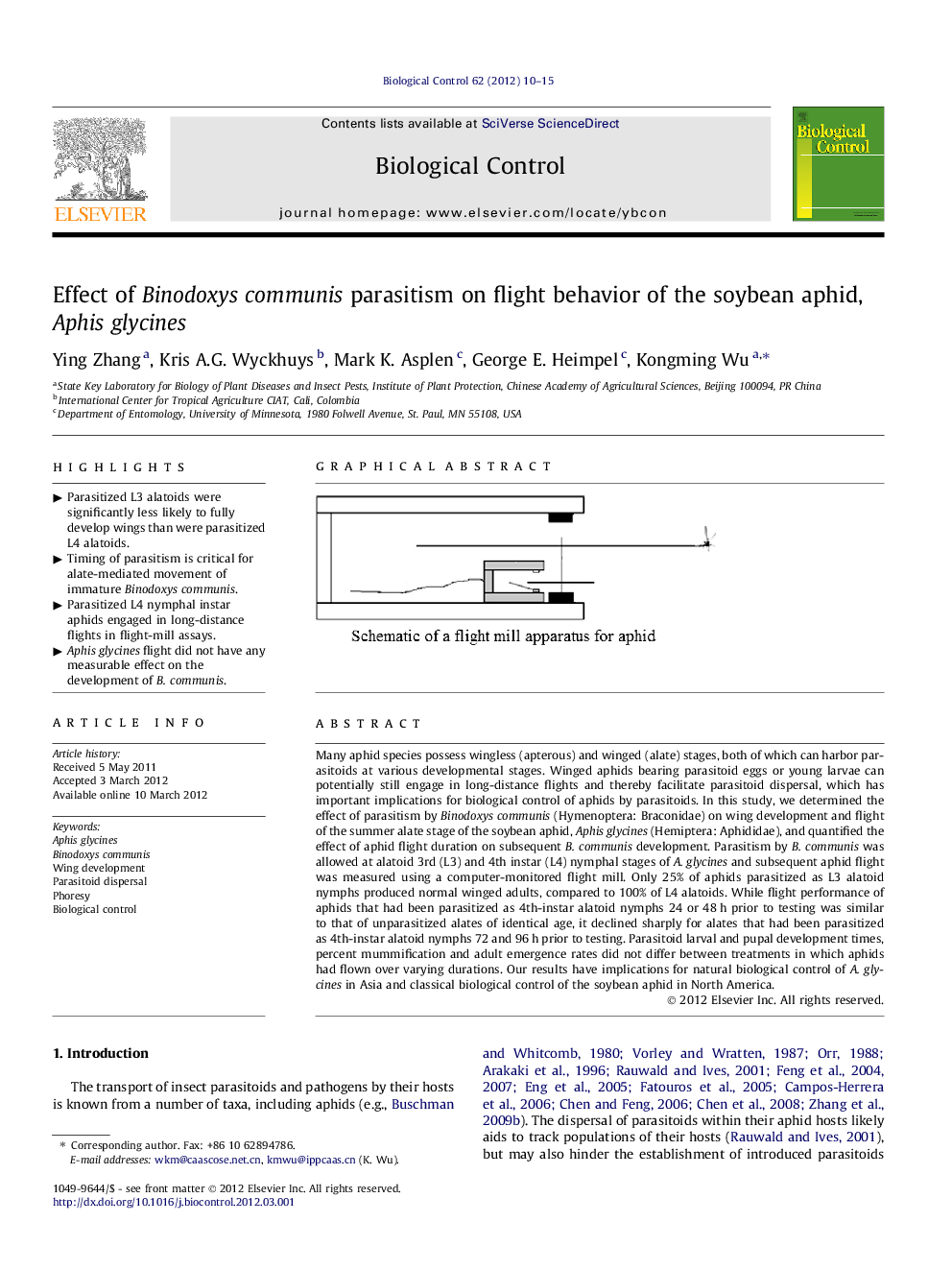| Article ID | Journal | Published Year | Pages | File Type |
|---|---|---|---|---|
| 4504075 | Biological Control | 2012 | 6 Pages |
Many aphid species possess wingless (apterous) and winged (alate) stages, both of which can harbor parasitoids at various developmental stages. Winged aphids bearing parasitoid eggs or young larvae can potentially still engage in long-distance flights and thereby facilitate parasitoid dispersal, which has important implications for biological control of aphids by parasitoids. In this study, we determined the effect of parasitism by Binodoxys communis (Hymenoptera: Braconidae) on wing development and flight of the summer alate stage of the soybean aphid, Aphis glycines (Hemiptera: Aphididae), and quantified the effect of aphid flight duration on subsequent B. communis development. Parasitism by B. communis was allowed at alatoid 3rd (L3) and 4th instar (L4) nymphal stages of A. glycines and subsequent aphid flight was measured using a computer-monitored flight mill. Only 25% of aphids parasitized as L3 alatoid nymphs produced normal winged adults, compared to 100% of L4 alatoids. While flight performance of aphids that had been parasitized as 4th-instar alatoid nymphs 24 or 48 h prior to testing was similar to that of unparasitized alates of identical age, it declined sharply for alates that had been parasitized as 4th-instar alatoid nymphs 72 and 96 h prior to testing. Parasitoid larval and pupal development times, percent mummification and adult emergence rates did not differ between treatments in which aphids had flown over varying durations. Our results have implications for natural biological control of A. glycines in Asia and classical biological control of the soybean aphid in North America.
Graphical abstractFigure optionsDownload full-size imageDownload as PowerPoint slideHighlights► Parasitized L3 alatoids were significantly less likely to fully develop wings than were parasitized L4 alatoids. ► Timing of parasitism is critical for alate-mediated movement of immature Binodoxys communis. ► Parasitized L4 nymphal instar aphids engaged in long-distance flights in flight-mill assays. ► Aphis glycines flight did not have any measurable effect on the development of B. communis.
